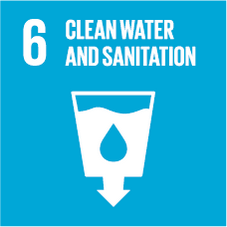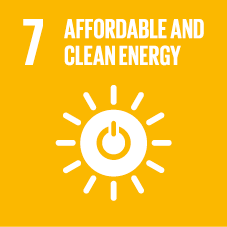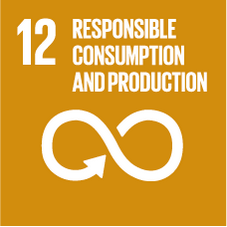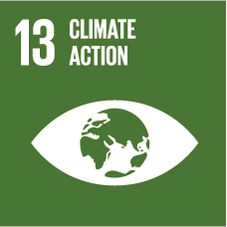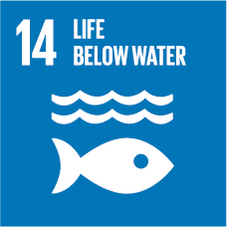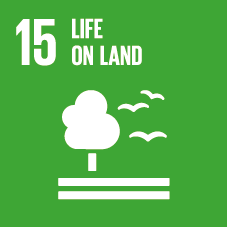Environment
UN Global Compact
Principles
Principle 7:
Businesses should support
a precautionary approach
to environmental challenges
Principle 8:
Businesses should undertake initiatives
to promote Пасвикgreater environmental responsibility
Principle 9:
Businesses should encourage
the development and diffusion
of environmentally friendly
technologies
Environmental Management System
Nornickel’s management considers environmental protection an integral part of the production process. The
Company complies with the applicable laws
and international agreements and
is committed to reducing emissions,
on a phased basis, and sustainable
use of natural resources.
The Environmental Management System within the Group is part of the integrated quality and environmental
management system, which enables the Company
to harmonise environmental and quality management initiatives with operations
of other functions (production management, finance, health and safety, etc.). Such
an approach has benefits both for environmental security and for overall performance across the Group.
During 2017, the Company carried out internal audits as part of the CIMS. In line
with international standards and Norilsk Nickel’s by-laws, internal audits were conducted by specially
trained and competent personnel:
- 18 EMS internal audits were held at the Company’s Head Office (as part of the CIMS internal audits);
- 66 internal audits were held at Polar Division, Polar Transport Division and Murmansk Transport Division
(17, 25 and 24 audits, respectively);
- In 2017, 40 internal EMS audits were conducted at Kola MMC (as part of the CIMS internal audits).
The Company has drafted and keeps updating a register of corporate and internal auditors.
Precautionary
approach
In accordance with its Investment Project Risk Management Regulations, Nornickel analyses risks and assesses
impacts and potential consequences using qualified expert review during both project initiation and
implementation.
In the event material risks are identified, mitigation initiatives are developed,
and a decision may be taken to abandon the project. During state expert appraisal, FEED documents for all
the projects being implemented by the Company undergo mandatory assessment for compliance with the
applicable law.
102-11
When planning operations, the Company ensures compliance with the requirements of the applicable Russian
environmental laws and regulations.
During 2017, the Company carried out internal audits as part of the CIMS. In line with international standards and Norilsk Nickel’s by-laws, internal audits were conducted by specially trained and competent personnel:
- 18 EMS internal audits were held at the Company’s Head Office (as part of the CIMS internal audits);
- 66 internal audits were held at Polar Division, Polar Transport Division and Murmansk Transport Division (17, 25 and 24 audits, respectively);
- In 2017, 40 internal EMS audits were conducted at Kola MMC (as part of the CIMS internal audits).
The Company has drafted and keeps updating a register of corporate and internal auditors.
| 2013 |
2014 |
2015 |
2016 |
2017 |
2018-2022 |
| 2013 — Nornickel presenting its new strategy |
| First strategic cycle |
Second strategic cycle |
| Deliverables |
Goals |
- Cessation of air emissions of ca. 370 ktpa from the sources of Nickel Plant
- Reduction of air pollutant emissions across the Group by 12% (2017/2013)
- Reduction of waste disposal by 21% (2017/2013)
- Reduction of water consumption by 16% (2017/2013)
|
2019
- Reduction of SO2 emissions in Nickel by 50%
- Significant reduction of discharged wastewater with sulphate, sodium chloride and boron
in boric acid content
2023
- Significant reduction of SO2 emissions
in Polar Division
|
| Environmental expenditures, RUB bn |
| 18.1 |
19.4 |
23.6 |
25.7 |
26.8 |
CAPEX for the Sulphur Project up to RUB 150 bn by 2023 |
| Projects |
- Shutdown of the outdated Nickel Plant (Polar Division, emissions)
- Upgrade of Talnakh Concentrator (Polar Division, emissions)
- Treatment of salt effluent from nickel refining operations at Kola MMC (Kola MMC,
effluents)
- Transition to copper-nickel concentrate briquetting technology (Kola MMC, emissions)
- Launch of electrolytic cobalt production (Kola MMC, emissions, effluents)
- Sodium bisulphite production from flue gas at Copper Plant (Polar Division, emissions)
- Change in off-gas removal process, elimination of ground-level emission sources
at Copper Plant (Polar Division, emissions)
|
- Sulphur Project (Polar Division, emissions)
- Upgrade of melting equipment, cessation
of low-grade concentrate processing
at Kola MMC (Kola MMC, emissions)
- Upgrade and expansion of refining capacities with transition to chlorine dissolved tube
furnace nickel powder technology (Kola MMC, emissions)
- Disposal of salt effluent from nickel refining operations (Kola MMC, effluents)
|
Environmental protection expenditures
The Group’s total environmental protection expenditures stood at RUB 26.8 bn in 2017, up 103.9% vs 2016. The
largest spending items were current environmental protection expenditures (RUB 20.9 bn) and capital
investments to ensure environmental protection and sustainable use of natural resources (RUB 5.0 bn).
The charges for permissible and surplus emissions (effluents) and disposal of production and consumption
waste amounted to RUB 0.6 bn while the charges paid by the Company to remedy damages arising from
non-compliance with environmental laws stood at RUB 0.2 bn.
Environmental costs and expenditures, RUB mln
| Expenditure type |
2016 |
2017 |
| Current environmental protection expenditures |
15,405.17 |
20,907.17 |
| Capital investments to ensure environmental protection and sustainable use of natural
resources
|
9,567.82 |
4,981.95 |
| Charges for permissible and surplus emissions (effluents) and disposal of production and
consumption waste
|
745.77 |
626.79 |
| Charges paid by the Company to remedy damages arising from non-compliance with environmental
laws (excluding environmental fines)
|
4.19 |
244.31 |
| Environmental expenditures and costs |
25,722.96 |
26,760.22 |
In 2017, the Company paid a total of RUB 999,000 in environmental fines (down 30% y-o-y) and received 18
improvement notices from regulators.
103-2 307-1
Performance indicators
Air protection
Polar Division’s various operations
mainly impact the environment in Norilsk. 54 pollutants are emitted to the air in this area. The key
pollutant is sulphur dioxide, accounting for ca. 98% of all emissions.
103-2 413-2
Kola MMC’s operations have environmental implications mostly for Monchegorsk and Zapolyarny towns and Nickel
settlement. The key pollutants resulting from copper and nickel feedstock processing are sulphur compounds
and dust which contains heavy non-ferrous metals such as nickel and copper.
Reduction of air emissions (especially those of sulphur dioxide and dust containing non-ferrous metals) is
the key objective pursued by the Company’s operational units in terms of environmental management.
To communicate its environmental efforts to the people of Norilsk, since 2012, Polar Division has been
running an automatic toll-free enquiry service offering short-term forecasts on the environmental situation
in the city.
To raise the stakeholders’ awareness
of its large-scale environmental initiative, in 2017, the Company opened a Sulphur Project showroom relying
on the latest exhibition technologies at Nadezhda Metallurgical Plant. The exhibits include:
- architectural models of the facilities
to be used to utilise sulphur dioxide emissions at the plant;
- building models with augmented reality elements to demonstrate solutions and technology;
- interactive stands providing information about the existing projects, Polar Division, Nadezhda
Metallurgical Plant and the Company’s environmental initiatives;
- screens with information videos about the projects.
In 2017, a roadmap to reduce air pollutant emissions at Polar Division in 2018–2023 was developed, with
Rosprirodnadzor’s approval obtained. The roadmap takes into account the current state of emission sources
following the Nickel Plant shutdown and the completed reconfiguration stages of Polar Division’s production
facilities. It includes major projects (the sulphur projects at Copper Plant and Nadezhda Metallurgical
Plant, and the converter section upgrade at Copper Plant), timely progress on which will allow Nornickel to
keep the emissions down to maximum permissible rates.
The official deadlines for reaching maximum permissible emission rates
at Polar Division were set forth in a decree of the government of the Krasnoyarsk Territory.
Environmental Management at Nornickel

Air pollutant emissions, kt 305-7

In 2017, the Group’s pollutant emissions decreased by 4.6%, with Polar Division’s emissions down by 4.6% and
Kola MMC’s emissions down by 8.3%.
The reduction was due to lower sulphur dioxide emissions primarily resulting from the Nickel Plant shutdown,
increased sulphur disposal to mineral waste upon completion of the Talnakh Concentrator upgrade, transition
to the copper-nickel concentrate briquetting technology at Kola MMC’s Zapolyarny site, and other
initiatives.
Greenhouse (GHG) gas
emissions
The Norilsk Nickel Group’s direct GHG emissions totalled 10,031,386 t of CO2 equivalent. The estimates for
Polar Division, Kola MMC and Nornickel’s fuel and energy operations are based on the Guidelines and
Instructions approved by Order of the Russian Ministry of Natural Resources No. 300 dated 30 June 2015.
Direct GHG emissions intensity equals 18.69 t of CO2 equivalent per RUB 1 mln
of consolidated revenue. 305-1 305-4
Use of ozone-destroying
substances
The Group neither produces nor uses ozone-depleting substances (ODS), except for small amounts used as a
chemical agent for laboratory-based chemical analysis as well as for filling
and topping of compressors in various
air conditioning units and carbonated water machines which produce water used as a cooling agent for medium- and low- temperature refrigerating equipment. The Company submits reports on ODS use to the Russian Ministry
of Natural Resources as required. 305-6
Protection of water bodies
The Group uses water from surface and underground sources for its drinking, production and process supply
needs
as well as for community and shipping needs. The water is withdrawn in compliance with the approved limits,
without any major impacts on water bodies. No water is withdrawn from
either the Ramsar Wetlands or from
other protected natural territories. 103-2
The Group’s wastewater effluents in general do not exceed the approved limits, including admissible impact
limits, or have any major impact on biodiversity of water bodies and related habitats.
The 7.2 mcm increase in water withdrawal of the Group in 2017 compared to 2016 was primarily due to higher
natural inflow of snow melt and rain water to mine
water of Zapolyarny, Kayerkansky and Oktyabrsky mines of Polar Division and increased processing of
metal-containing feedstock at Nadezhda Metallurgical Plant following the shutdown of Nickel Plant.
Higher water withdrawal at NTEK
(up 2.0 mcm y-o-y) resulted from longer process equipment running time.
The 3.8 mcm decrease in water withdrawal at Kola MMC was linked
to lower inflow of mine water.
The Group’s overall decrease in water use by 8.3% is related to the discontinued operations at Nickel Plant
and less power generation at NTEK’s TPP.
Lower water consumption at Kola MMC comes with significantly higher volumes of recycled and reused water as a
result of commissioning of Cobalt-300 and disposal of salt effluent from nickel refining operations.
In 2017, the Group’s wastewater discharge grew by 4 mcm y-o-y (+2.8%) and totalled 147.6 mcm. This was due
to fluctuations in the inflow of mine water through the year. The 23.6 kt (+12.2%) increase in pollutant
discharges was related to higher wastewater volumes
as well as increased productivity of electrolysis unit No. 1 of the nickel electrolysis shop at Kola
MMC.
The wastewater volumes treated to standard quality at treatment facilities grew by 0.9 mcm (+16.7%) following
the commissioning of hydrodynamic filters at Skalny open pit of Polar Division and utility wastewater
treatment facilities at Norilskgazprom.
In 2017, the wastewater disposal
at Kola MMC was down by 1.4% primarily due to lower water withdrawal for process needs.
Total water withdrawal
1, mcm
306-1
Waste management
Over 90% of the Group’s production waste is classified as hazard class 5 (practically non-hazardous
waste), including rock and overburden, tailings, and metallurgical slags. To minimise
the environmental impact, mining waste and tailings are stored at special waste disposal sites and
are used (utilised)
at the Group’s facilities and other companies operating in the Norilsk Industrial District. Mining
waste and tailings are used for preparation of filling compounds, as flux for melting of metal
in melting furnaces, for construction
and strengthening of tailing dumps, railroad groundwork, road filling, etc. ММ3 103-2
Total water consumption, mcm
Total wastewater discharge, mcm
306-1
 1 The total for Polar Division, Norilskenergo Branch and other divisions includes water
withdrawal from NTEK.
1 The total for Polar Division, Norilskenergo Branch and other divisions includes water
withdrawal from NTEK.
All of the Group’s waste disposal sites
are listed on the national disposal site register. The sites undergo environmental monitoring in line with
designated programmes. Tailings pits are monitored additionally as required by safety standards for
hydraulic structures.
Production and consumption waste
is treated in accordance with waste generation standards waste disposal limits.
In 2017, Polar Division commissioned
the first stage of tailings pit at Talnakh Concentrator, which allowed for environmentally safe storage
of ca. 31 mt of mineral waste.
In 2017, the Group generated 1.34 mt less waste than in 2016. Polar Division saw a 0.7 mt increase (+3.0%) in
the total volume of waste due to liquidation of Nickel Plant facilities as part of the Sulphur Project,
opening up and mining of new levels
at Oktyabrsky mine and open-pit development at Zapolyarny mine.
Waste generation at Kola MMC decreased by 2.0 mt (-18.9%) y-o-y
mainly due to discontinued open-pit mining at Yuzhny.
In 2017, the Norilsk Nickel Group re-used 65% of all produced waste and is committed to keep increasing the
rate.
Most per-unit environmental impact indicators of the Group show consistent downward trends.
Environmental impact indicators per unit
| Indicator |
UoM |
2013 |
2014 |
2015 |
2016 |
2017 |
| Air emissions |
t / RUB mln1 |
5.727 |
4.404 |
4.077 |
3.53 |
3.438 |
| Water withdrawal |
‘000 cubimeters / RUB mln |
0.963 |
0.772 |
0.689 |
0.599 |
0.625 |
| Water consumption |
‘000 cubic meters / RUB mln |
3.681 |
3.109 |
2.808 |
2.668 |
2.5 |
| Wastewater disposal |
‘000 cubic meters / RUB mln |
0.399 |
0.319 |
0.277 |
0.262 |
0.275 |
| Pollutants discharged in wastewater |
t / RUB mln |
0.381 |
0.308 |
0.302 |
0.352 |
0.404 |
| Waste generation |
kt / RUB mln |
0.111 |
0.077 |
0.066 |
0.061 |
0.059 |
Waste generation and disposal
2, mt
306-2
 1 Hereinafter in the table – RUB mln of the consolidated revenue.
1 Hereinafter in the table – RUB mln of the consolidated revenue.
2 The bulk of waste is generated as a result of Polar Division and Kola MMC operations. The share
of waste generated in the course of operations of the Group’s other entities (including NTEK) is less than
0.01 mt (less than 0.5% of the total).
Biodiversity
conservation
Nornickel recognises the importance
of biodiversity, and its environmental policy seeks to minimise the Company’s footprint and hence contribute
to biodiversity conservation. In 2017,
the Company developed a standalone Biodiversity Policy approved by the Board of Directors in early 2018. 103-2
Its focus areas include land rehabilitation, cooperation with nature reserves and reproduction of aquatic
bioresources.
The Company is supporting the programmes run by nature reserves to study and preserve rare and endangered
species listed on Russia’s Red Data Book, including Siberian bighorn sheep, polar bears and lesser
white-fronted geese.
Environmental protection and monitoring measures
taken during the field life cycle 304-3
MM1

Land rehabilitation
The Company is developing the Oktyabrskoye, Talnakhskoye and Norilsk-1 Fields on the Taimyr Peninsula, the
Zhdanovskoye, Zapolyarnoye, Kotselvaara and Semiletka Fields on
the Kola Peninsula, and the Bystrinskoye Field in the Trans-Baikal Territory.
Pursuant to the Russian laws, design documents on capital construction projects, including field
development, must have a section describing the company’s environmental protection and control initiatives
to track changes across the ecosystem resulting from ongoing development, construction, or any accidents.
The Company has field development, mine liquidation and land rehabilitation projects in place for all of its
fields, with special reserves set up for rehabilitation activities. The projects provide for making layouts,
slopes, hydraulic and irrigation structures, and taking other technical measures. Importantly,
the Company’s fields are in commercial development, exploration and production test stages with liquidation
or abandonment not expected until 2050.
The Company complies with all applicable regulations for land rehabilitation and other environmental
protection initiatives associated with field development, construction and other operations.
The Company has field development, mine liquidation and land rehabilitation projects in place for all of its
fields, with special reserves set up for rehabilitation activities. The projects provide for making layouts,
slopes, hydraulic and irrigation structures, and taking other technical measures. Importantly, the Company’s
fields are in commercial development, exploration and production test stages with liquidation or abandonment not expected until 2050.
The Company complies with all applicable regulations for land rehabilitation and other environmental
protection initiatives associated with
field development, construction and other operations.
Cooperation with nature
reserves
Kola MMC is located 15 km from
the Pasvik Nature Reserve and 10 km from the Lapland Biosphere Reserve, while Polar Division’s sites are
some 80–100 km away from the buffer zone
of the Putoransky Nature Reserve. Bystrinsky GOK is located 160 km away from the Relict Oaks State Reserve
(the Trans-Baikal Territory). At present, the Company’s operations do not produce any significant impact
on areas adjacent to the nature
reserves and areas of high biodiversity value outside protected areas. 304-1 304-2
Taimyr Peninsula
The Putoransky State Nature Reserve,
one of the biggest in Russia with a total area of over 1,887,000 ha, was included
on the UNESCO world heritage list in 2010. The reserve is part of the Joint Directorate of Taimyr Nature
Reserves, which also includes the Putoransky, Taimyrsky and Big Arctic reserves, as well as the Purinsky and
Severozemelsky natural protected areas.
The Joint Directorate of Taimyr Nature Reserves is implementing environmental projects selected under
Nornickel’s
World of New Opportunities charitable programme to support socially important initiatives. The projects
focus on raising environmental awareness, environmental protection and engagement of local communities, land
improvement and landscaping.
In 2017, we helped Taimyr nature reserves to organise environmental raids and transporting research groups to
the outer field locations.
Disturbed and rehabilitated land area in 20171, ha 304-3
ММ1
| Indicator |
Total |
Including |
| during
mining
|
during
construction
|
during disposal of solid domestic and industrial waste |
during other activities |
| Total disturbed area,
beginning of period
|
14,722.38 |
13,102.36 |
366.62 |
66.36 |
1,187.04 |
| Total rehabilitated area |
0 |
0 |
0 |
0 |
0 |
| Total disturbed area
in the reporting period
|
167.54 |
105.11 |
62.43 |
0 |
0 |
| Total disturbed area,
end of period
|
14,889.92 |
13,207.47 |
429.05 |
66.36 |
1,187.04 |
1 The difference of 324.68 ha against the year-end figure in the 2016 CSR Report is due to
updated data for Norilskenergo.
Kola Peninsula
The Company cooperates with
the Lapland and Pasvik Nature Reserves in several areas. The key ones are environmental monitoring and
vegetation restoration in the vicinity of Kola MMC’s production sites.
The Pasvik State Nature Reserve
is featured as one of the Wetlands for
the Shadow List of Ramsar Sites under the name of Fjarvann – Schaannings Field Base. It covers a total area
of over 14,000 ha.
Since 2006, the Pasvik Nature Reserve has been carrying out an assessment
of the natural environment in the area
of Pechenganickel Plant (including Zapolyarny, Nickel and their suburbs, as well as the Pasvik State Nature
Reserve), and developing a long-term environmental monitoring programme. The reserve
is also working on several projects that received grants under the World of New Opportunities charitable
programme.
The projects seek to reach out to Russian and Norwegian audiences and cover
a variety of topics, including traditional use of natural resources, raising environmental awareness of
schoolchildren and promoting research.
On 17 January 2017, the reserve
launched its visitor centre completed with the support from the Company, which marked the start of the Year
of Environment in the Murmansk
Region.
304-4
Red List species found in the Pasvik, Lapland and Putoransky Nature Reserves, pcs
| Indicator |
Pasvik |
Lapland |
Putoransky |
| On the IUCN Red List, of which |
23 |
23 |
13 |
| Endangered (EN) |
1 |
1 |
1 |
| Vulnerable (VU) |
1 |
0 |
3 |
| Near Threatened (NT) |
1 |
0 |
1 |
| Least Concern (LC) |
20 |
22 |
8 |
| On Russia’s Red Data Book, of which |
16 |
21 |
14 |
| Endangered (EN) |
1 |
10 |
- |
| Vulnerable (VU) |
6 |
0 |
3 |
| Near Threatened (NT) |
8 |
10 |
8 |
| Least Concern (LC) |
1 |
1 |
3 |
| On the Murmansk Region’s and Krasnoyarsk Territory’s Red Data Books |
93 |
153 |
13 |
With an area of 278,000 ha, the Lapland State Nature Biosphere Reserve is one
of the largest protected areas in Europe and also one of Russia’s oldest nature reserves (founded in 1930).
In 1985, it was included in the UNESCO Network of Biosphere Reserves.
In 2002, Kola MMC and the Lapland Biosphere Reserve signed contracts
for the development of a methodology
to reclaim disturbed natural environments in the areas affected by permanent emissions from Severonickel
Plant and monitoring of the Monchegorsk District and the Lapland Biosphere Reserve.
The scientific research data provided a basis for further rehabilitation of disturbed lands and for sanitary
and fire-protection improvements in the forest areas.
The Company also provided financial
aid for the Lapland Biosphere Reserve
to make a few new nature trails and publish books about Oleg Semyonov-Tyan-Shansky and Herman Kreps,
the reserve founders.
Impacts from transport operations
| Fleet |
Transported products |
Social and environmental responsibility |
Outcome |
| The Group’s own fleet
|
Products of the Group companies
Products procured to meet internal needs
Commercial and social cargo
|
- Compliance with international conventions, codes, guidelines, Russian laws, regulations
and requirements
- Four freight-forwarding licences, all environmental permits in place
- Multi-stage control from the Group companies, other transportation participants and
supervisory bodies
- Security and industrial health and safety management systems in place at facilities
|
No significant environmental impact produced by
the Company’s freight and personnel transportation
|
| Fleet chartered
by the Group's Metal
Trade Overseas
|
Products of the Group companies |
- Compliance of the fleet’s environmental parameters with
the requirements of international environmental conventions
|
Raising environmental awareness
in the Pasvik State Nature Reserve
Nornickel has provided funding to build the Pasvik Reserve’s state-of-the-art visitor centre in the
settlement of Nickel. Its area spans 840 sq m comprising
a permanent environmental exposition and hosting ecological seminars and conferences, dedicated film
screenings and workshops. The multifunctional centre also plays host to various environmental forums. The
Company
has partnered the reserve experts to raise environmental awareness in the Pechengsky District of the
Murmansk Region, including by spreading the environmental knowledge, teaching children and adults how to
care about nature, and promoting the sustainable nature-focused tourism.
Developing the Relict Oaks State Reserve
Nornickel has taken on a commitment to help develop the Relict Oaks State Reserve located in the
Gazimuro-Zavodsky District of the Trans-Baikal Territory. This is a specially protected natural area
stretching along the Russian-Chinese border. It spans across an area of 30,000 ha and features unique
ecosystems that have remained untouched to the present day. Among them are the island woods with numerous
rare and endangered relict Manchurian, Far Eastern and Boreal plant and animal species. The project provides
for the construction of a special base for reserve rangers and scientists with all the required equipment
and communications. The reserve will also host education events for children and adults.
Rescuing the endangered lesser
white-fronted geese
The Company has been providing support for a long-term programme focusing on the research and protection of
lesser white-fronted geese (the Anatidae family) listed on the Red Data Book. Scientists managed to learn
more about the bird’s distribution across
the Taimyr Peninsula and even track
its wintering grounds. The successful completion of seven research expeditions to the outlying parts of the
Putorana Plateau helped collect valuable data on the habits of this rare goose
and develop a strategy to protect this species. Thanks to the programme, Taimyr is now home to around
4,000 lesser white-fronted geese.
Environmental impact metrics of Norilsk Nickel Harjavalta
| Indicator |
2013 |
2014 |
2015 |
2016 |
2017 |
| Industrial wastewater, ‘000 cubic meters |
625 |
625 |
728 |
771 |
899 |
| Pollutants in industrial wastewater, t |
| Ni |
0.5 |
0.41 |
0.4 |
0.4 |
0.5 |
| SO42- |
19,420 |
19,281 |
20,051 |
22,457 |
25,853 |
| NH4+ (converted to nitrogen) |
28.3 |
45 |
36 |
49.5 |
60.3 |
| Total water consumption, mcm2 |
11.50 |
10.90 |
10.4 |
10.9 |
11.10 |
| Total air pollutant emissions, t |
| Ni |
2 |
1.8 |
1.7 |
1.6 |
1.7 |
| NH3 |
80 |
50 |
70 |
70 |
69 |
| Waste generation, kt |
22 |
30.8 |
16.5 |
7 |
5.5 |
| Waste disposal, kt |
21.3 |
29.8 |
15.7 |
0.8 |
0.8 |
1 Excluding 66,189 kg (Ni) discharged in July 2014 as Ni solution due to a heat exchanger
failure at the reduction plant.
2 Over 95% is water withdrawn from surface sources (Kokemaenjoki River).
Let’s Do It environmental marathon
The environmental marathon for
the Company’s employees is held
on an annual basis. The marathon seeks to promote environmental responsibility and support the joint
volunteering initiatives of the employees and the local communities aimed at preserving
the natural heritage. The marathon’s environmental teams are made up of Nornickel’s eco-conscious employees
from Moscow office, Kola MMC facilities, Polar Division and other subsidiaries
of the Company. As part of the project,
a total of 75 environmental campaigns and initiatives have been launched, and over 1,000 trees and bushes
have been planted. Those initiatives included an ecological quest to revamp the nature trail in the Lapland
Biosphere Reserve, construction of titmouse houses for the Putoransky Nature Reserve, and a Green Living
Room event held in the Pasvik State Nature Reserve’s visitor centre.
In 2017 alone, over 3,500 volunteers
took part in the project.
Reproduction of aquatic bioresources
The Company provides annual financing for the projects to breed valuable fish species, including those
listed on Russia’s Red Data Book, and release them into natural water bodies. In 2017, the Company helped
release over 316,000 Siberian sturgeon fingerlings into the Yenisey River, and 235,000 salmon fingerlings
into the Umba River (Murmansk Region).
Impacts from foreign
operations
Norilsk Nickel Harjavalta has all
the necessary environmental permits
and operates a certified integrated management system that meets the requirements of ISO 9001, ISO 14001 and
OHSAS 18001. Its main environmental impact consists in the emissions of ammonia (NH3) and nickel
into the air, and discharges of nickel (Ni), sulphates (SO42-) and ammonia ions
(NH4+) into water bodies.
In 2017, Norilsk Nickel Harjavalta met
all permit requirements for emissions, discharges and waste disposal volumes. Lower waste volumes result
from switching to the Company’s feedstock that is less contaminated with impurities as compared to third
party materials.
Energy conservation
and efficiency
Most of the Company’s production facilities and workforce operate or live
in the harsh Arctic climate. The fuel and energy block is an integral link in the production chain and a key
element
in providing adequate support
to the households.
103-2
The Company’s fuel and energy assets include:
- NTEK. The company supplies electric power, heat and water to Norilsk and
all facilities in the Norilsk Industrial District. The energy sources include renewables (hydropower)
and natural gas. By its location and operational mode, the company’s local power grid is isolated from
the national grid (Unified Energy System of Russia), which means stricter reliability requirements;
- Taimyrgaz. The company develops
the Pelyatkinskoye Gas Condensate Field, the Taimyr Peninsula’s largest hydrocarbon deposit.
- Norilskgazprom. The company produces gas in the Severo-Soleninskoye Gas Condensate Field,
Yuzhno-Soleninskoye Gas Condensate Field, and Messoyakhskoye Gas Field.
- Norilsktransgaz. The company transports natural gas and condensate from Norilskgazprom’s fields to
consumers in the Norilsk Industrial District.
- Bystrinsk Electric Grid Company.
The company was set up in 2015 as
a construction management company under the investment project to build
a power line to Bystrinsky GOK. In late 2017, the power grid facilities were formally transferred to FGC
UES
in accordance with the contract
for the sale of the same.
- Arctic-Energo. The company is Kola MMC’s default supplier based in Monchegorsk.
The Norilsk Nickel Group’s total energy consumption 302-1 302-3
| Indicator |
UoM |
2013 |
2014 |
2015 |
2016 |
2017 |
| Fuel consumption |
TJ |
167,489 |
162,301 |
161,710 |
172,643 |
176,438 |
| Coal |
TJ |
4,250 |
4,417 |
4,170 |
2,132 |
1,460 |
| Natural gas |
TJ |
151,351 |
146,200 |
145,266 |
151,081 |
134,709 |
| Diesel fuel and fuel oil |
TJ |
11,888 |
11,684 |
12,274 |
15,640 |
35,090 |
| Gasoline and aviation fuel3 |
TJ |
– |
– |
– |
3,789 |
5,178 |
| Electricity and heat consumption |
TJ |
75,219 |
82,978 |
77,356 |
65,221 |
61,963 |
| Electricity consumption |
TJ |
44,499 |
45,100 |
42,943 |
32,530 |
32,355 |
| Consumption of water and steam heat |
TJ |
30,720 |
37,878 |
34,413 |
32,691 |
29,609 |
| Total energy consumption across the Group4 |
TJ |
173,955 |
169,307 |
173,056 |
174,314 |
178,654 |
| Energy intensity |
GJ / RUB mln5 |
474 |
371 |
349 |
318 |
333 |
3 Consolidated data have been calculated since 2016.
4 Calculated as per the GRI methodology taking into account fuel consumption for all purposes,
including electricity and heat generation by the Group’s own CHPPs, energy procurement and sales internally
and to third parties, and energy generation by HPPs.
5 RUB mln of the consolidated revenue.
The key documents governing the development of the fuel and energy assets are the Fuel and Energy Development
Strategy and the Programme to Upgrade, Revamp and Replace the Norilsk Industrial District’s Power Facilities
through 2025.
For the purposes of implementing
a uniform R&D policy and meeting
the targets of the strategy for the fuel
and energy assets, the Company has
set up an Expert Committee on Energy, which forms a part of the Company’s R&D Council and is chaired by the
Senior Vice President – Head of Non-Industrial Assets and Energy Supply.
To achieve the fuel and energy development goals and objectives, the Company is running investment projects
approved by the Investment Committee.
In 2017, the Company continued to enhance the reliability of generating equipment, grid and gas
transportation infrastructure and boost gas output.
The Ust-Khantaiskaya HPP is running
a large-scale project to replace equipment in hydroelectric units, and launched a third one launched in
2017.
The Company made a decision to replace adjustable blade hydroelectric units that had been operating for over
40 years, in 2012. The new units boast better reliability and service life of at least 50 years.
Also, Nornickel developed Energy Saving and Energy Efficiency Programme for Polar Division approved by its
Deputy CEO – Chief Engineer.
In 2017, the programme provided for the completion of an upgrade to compressor systems at Nadezhda
Metallurgical Plant, and capital repairs of heating stations at Copper Plant. The Company continued rolling
out energy efficient equipment across its other business units, including Mayak, Zapolyarny and Oktyabrsky
mines, Talnakh and Norilsk Concentrators, and Kola MMC’s units, and installing an automated commercial
energy metering system.
Each year, the Company develops and implements organisational and technical action plans to save fuel, heat,
power
and water.
